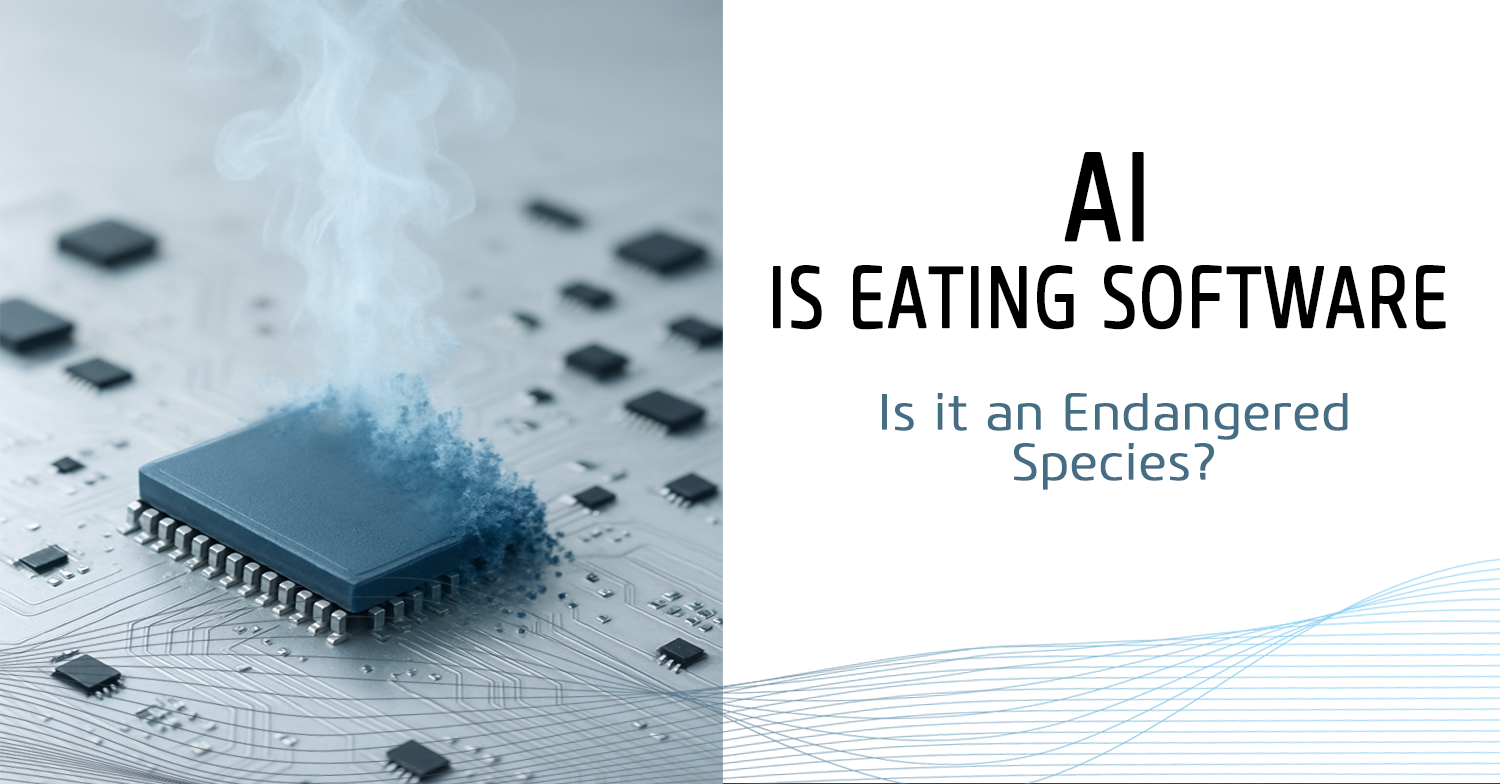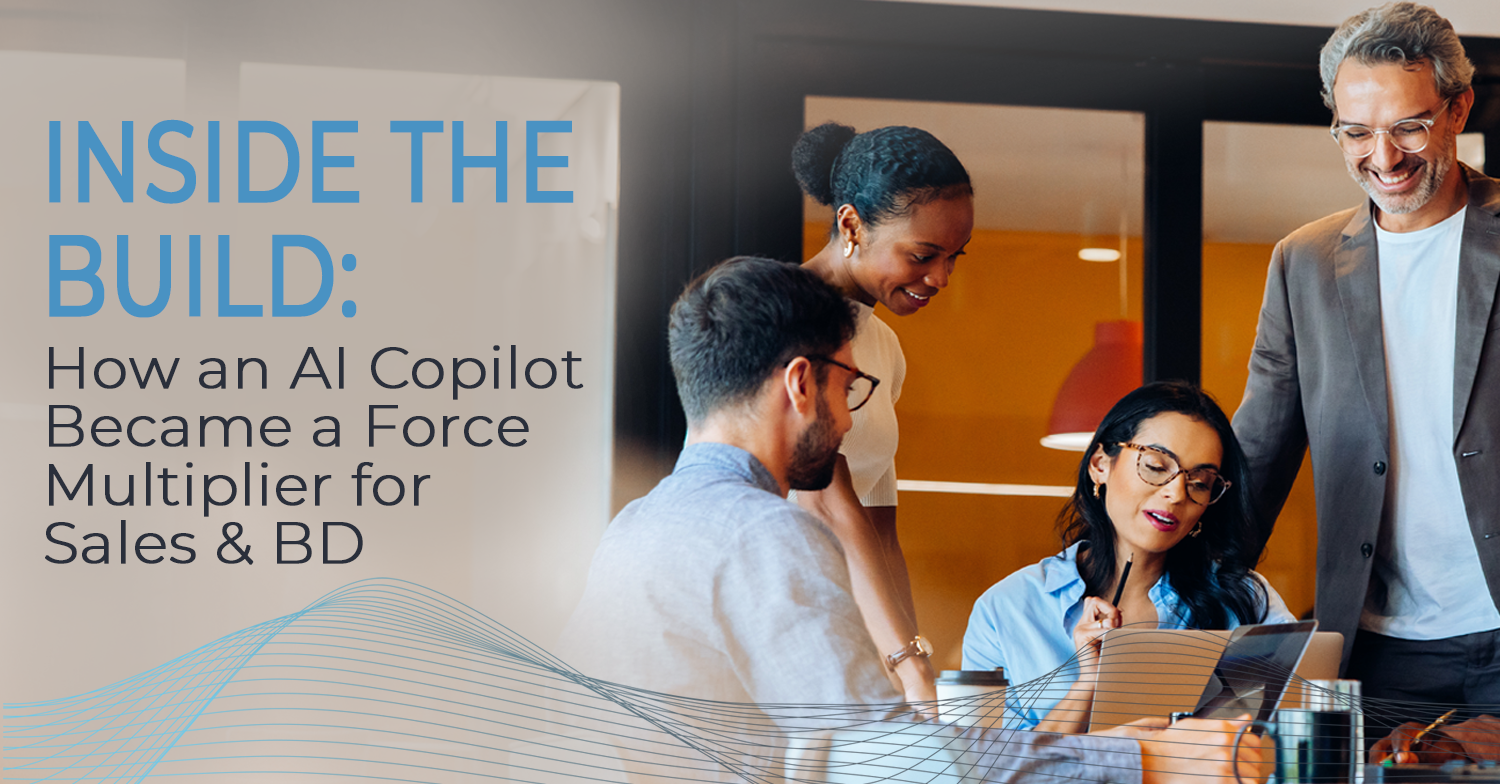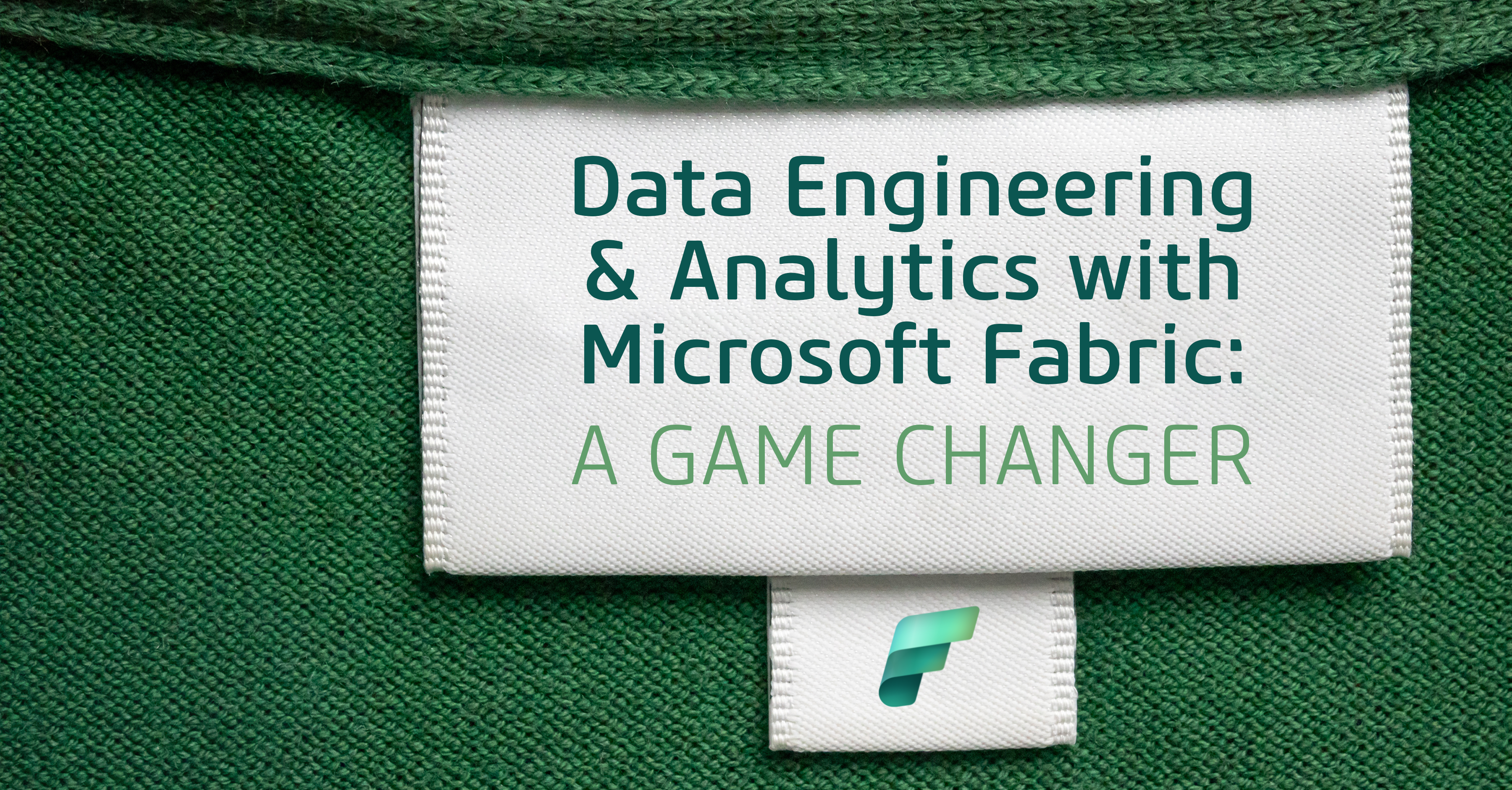“This article is 100% organic and has been untouched by AI.”
“Software is eating the world” – Marc Andreesen, 2011
Marc Andreesen’s famous quote foresaw the rise of software-defined businesses whose products and services were entirely composed of software. We are at a similar turning point in IT history where this software as we currently know it, will change radically.
How fast this will occur is difficult to predict, but I suspect that when it does we will all say, “that was faster than we thought!”.
GenAI language models have new skills not previously available. And they possess generalized knowledge, having been trained on the bulk of the Internet. Knowledge and skills that make them applicable to almost any task that can be expressed in any symbolic language. This means they can replace coded software to perform many business application functions.
Let me re-iterate that: many functions in applications, as we currently know it, can be performed natively by AI - without writing software.
Agency
From the dawn of GenAI we have believed in giving the models agency.

We did not merely consider them to be the “Swiss army knives” of natural language processing, as some did; we used them for their superpowers. We have built extremely advanced frameworks that give a team of models agency – the responsibility for achieving a complex task, while controlling it via an orchestration framework.
A model decides how to complete the task and executes.
Our orchestration framework and guardrails keep it on task.
In the early days the tasks a model could reliably complete were much smaller. But with improvements in model post-training, and with thinking models, these tasks can now be arbitrarily complex.
Hold this agency thought for a moment.
Proxies
On the software side we have been guiding our clients through Digital Transformation since its infancy. In the early days it started with teaching clients how to change physical products to digital, for example implementing a digital gaming experience that was previously physical. The customer often does not want the physical product – they want the experience. Thus the physical product is just a proxy for what the user really wants.
We have seen a continuous stream of physical products turning digital. Think “vinyl LP to cassette tape to CD-ROM to MP3 player to streaming music service” with a product disintermediated at each step along the way. The user does not want the physical thing – the user just wants to enjoy the music.
Hold on to this proxy idea too.
What about Software?
Earlier this year I read of a user that no longer needed a subscription to a popular image editing application because they could do everything they needed to do to manipulate an image using ChatGPT.
And I thought “thus starts the next wave of digital transformation”.

Just as the smartphone displaced hundreds of physical products, Language Models and their successors will have a similar impact on functions within software applications.
We are using a variety of advanced software development tools at Online, like Cursor and Windsurf and Copilot, and they are changing how we develop software.
They are also democratizing software development as visionary companies hold hackathons involving thousands of business people, without the assistance of any software developers.
This is the process of software “sublimation”, where software transforms from a solid (very heavy code using pro coding tools) to a liquid (low code and no code development tools) to a gas. In this final state there is no software, it is just vapour – and business functions are provided by AI.
A major enterprise software vendor has adopted the mantra “GenAI is the new UI”.
I believe “GenAI is the new software”.
As we give models more agency to complete tasks within an application, carefully orchestrated and controlled, and tasks grow larger as models become more capable, software as we know it will dissolve into an orchestrated collection of AI functions. Future software is going to use language models to implement major functions within applications, until, at some point in the future, software is mostly that, just a collection of intents and instructions and rules.
Back to the proxy Idea.
The user does not want a software web app page with hard-wired form fields and buttons, no matter how good the UX design is. It is just a proxy for what the user really wants, which is to perform a business function.
Why let software get in the way?
The 'how' is unimportant, the result is what matters.
This is intent-based computing.
Gauging on the past few years' incredible rate of change, we know that this pace will only continue to gain momentum. It's crucial to keep up.
Online has developed deep knowledge of complex GenAI application development and AI model orchestration, building user experiences that are consistent, reliable and secure.
If you want assistance navigating this next transformation of software, let’s talk.
Late this week: In evidence of this assertion, the industry has developed benchmarks aimed to test how well a model can run a small business. Vending-Bench tests a models ability to completely run a vending machine business. While previous models such as Claude and O3 were beginning to outperform the human baseline for this test, Grok 4, unveiled two days ago, generated a 'Net Worth' performance measure nearly 500% of the human score. While this performance is from a test environment and not the real world, its evidence that models' ability to run business functions without additional software is only a release away.
About the Author
.png?width=267&height=326&name=Larry%20Headshot2%20(3).png)
Technical Fellow & Director, Innovation Lab | GenAI Architect | Digital Transformation Advisor
With over 40 years in software architecture and 25+ years of hands-on coding experience, Larry combines business, technical, and project management expertise to devise solutions for intricate business challenges. His extensive experience spans enterprise modeling, application and data architecture, and technology at various levels, supported by a history of teaching methodologies to organizations like Samsung.
Larry leads research teams that explore innovative applications of new technologies, such as Large Language Models, AI, graph databases, and eXtended reality, to solve complex business problems, create new markets, and disrupt industries. Recently, his primary focus has been on generative AI and developing proprietary frameworks for new conversational paradigms and enterprise applications.
By building proofs-of-concept to validate R&D hypotheses and demonstrate how these technologies can transform sectors like healthcare, finance, and gaming, Larry is a trusted advisor to numerous internal and external stakeholders.
Larry’s strong background in cybersecurity and compliance with complex standards in highly regulated industries is considered a valuable asset to apply to the intricate and ever-changing technology landscape.





Submit a Comment